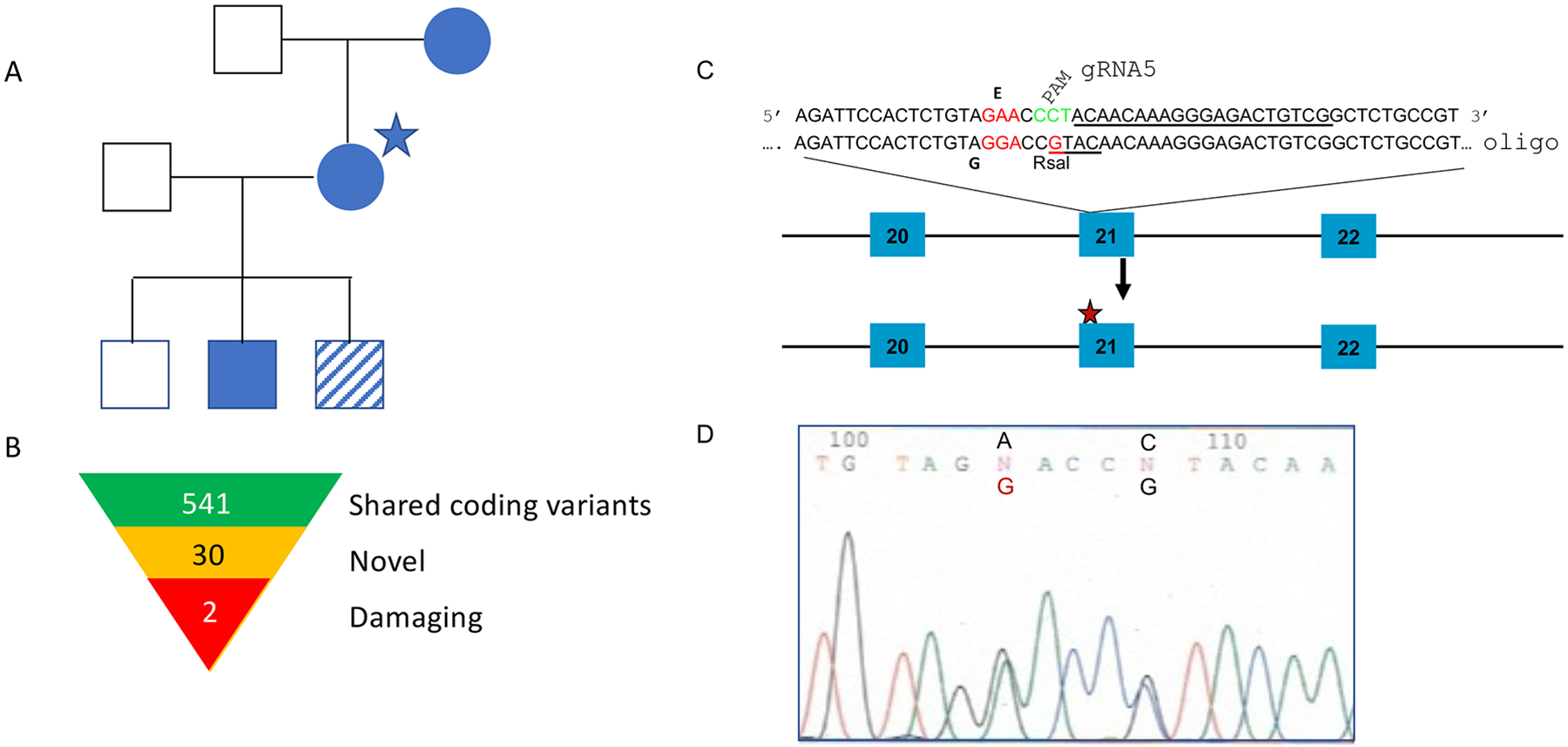Fig. 1.

Family Pedigree (A) Proband is indicated with a star. All filled symbols were sequenced and had the E626G mutation in STAT4. Striped symbol was not available for sequencing but did develop DCM. (B) Summary of shared coding variants found through sequencing. (C) Sequence of the guide RNA, used to generate the E626G mutation in exon 21 of the mouse STAT4 gene. PAM sequence is in green. Oligo sequence shows the introduced SNPs, one for the intended change E626G, and one to destroy the PAM sequence and prevent re cutting, and also to introduce a RsaI restriction enzyme site, used for genotyping. (D) Actual sequence chromatogram result showing the introduced by CRISPR/Cas9 homology-directed repair SNPs in a heterozygous founder.
